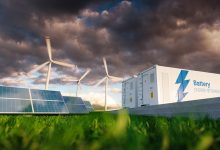The NSW Government has shortlisted a total of 21 renewable energy and energy storage projects that are in line to receive grant funding under the state’s flagship Emerging Energy program, supporting the construction of up to 700MW of dispatchable electricity generation across the state.
Most of the projects involve some form of pumped hydro or battery storage, but also include proposals to build a concentrated solar thermal plant and biogas generators. The NSW state government is keen to head off any potential for supply shortfalls with the looming closure of the Liddell power station.
The NSW Government intends to draw upon funds collected by the $1.4 billion NSW Climate Change Fund to provide capital funding to assist with the construction of the projects.
The shortlisted projects range from a 5MW sustainable schools virtual power plant by Hivve Technology, through to a larger 235MW expansion of the Shoalhaven pumped hydro station owned by Origin Energy.
“The NSW Government is committed to delivering affordable, reliable and cleaner power for NSW. The Emerging Energy Program does just that,” NSW energy minister Matt Kean said.
“These projects will help show the way for new technology, making it easier for other projects to come online, increase competition and put downward pressure on prices.”
The NSW Government expects to narrow the field by the first half of 2020, with a total of $75 million of grant funding to be awarded under the Emerging Energy Program. To be eligible for funding projects must provide at an additional 5MW of generation capacity, be located in the NSW region of the National Electricity Market and must contribute to an overall reduction in greenhouse gas emissions.
One of the shortlisted projects is a hybrid project proposed by Goldwind Australia, that is listed as using gas as its primary energy source. While little is presently known about the gas-hybrid project, it may look similar to the Agnew microgrid project in Western Australia, which included wind turbines supplied by Goldwind that operate alongside biogas, solar and battery storage.
The NSW Government expects that the projects will also be eligible to receive investment from the Clean Energy Finance Corporation under the Dispatchable Power Program, unlocking around $2 billion in new infrastructure investment.
NSW Energy Minister Matt Kean will want to support the emergence of new generation projects in NSW, with the state facing the closure of the Liddell power station and a growing status of being a laggard when it comes to clean energy investment.
“AEMO’s latest report identified that NSW is well placed to handle the summers up until Liddell’s retirement in 2023 but we’re planning for the future, looking at how we can harness tomorrow’s technology today by encouraging private capital to build the 21st century grid,” Kean said.
The NSW Government has also awarded a total of $7.1 million in grants to ten proposed projects renewable energy and storage projects, to support the completion of pre-feasibility studies, with an aim to make them “shovel ready”.
The ten additional projects could provide an additional 2,150MW of dispatchable generation capacity, but require further work to reach the point where they are investment ready.
Companies that have shared in the pre-feasibility funding include Hydrostor Australia, which is considering a 200MW compressed air energy storage facility at a former mine site in Broken Hill. Hydrostor recently secured A$55 million in financial backing, and which will be partly used to fund its flagship compressed air energy storage project in South Australia.
Other projects include 1,600MW of pumped hydro energy storage projects, almost 400MW of battery storage projects and a 20MW virtual power plant being pursued by Solar Analytics.
The NSW Government has faced criticism as emerging as a relative laggard in the transition towards clean energy, getting one of the lowest ratings from the Climate Council in their most recent ‘race to clean energy’ scorecard.
The ACT has officially achieved its target of 100 per cent renewable electricity, with South Australia aiming for 75 per cent renewables by 2025 and both Queensland and Victoria going for 50 per cent by 2030. NSW stands alone in not setting a dedicated renewable energy target.
Energy minister Matt Kean recently told radio station 2GB and the Daily Telegraph that he saw ‘no competition’ to coal in NSW, and that “coal is absolutely here to stay for decades to come in NSW.”








